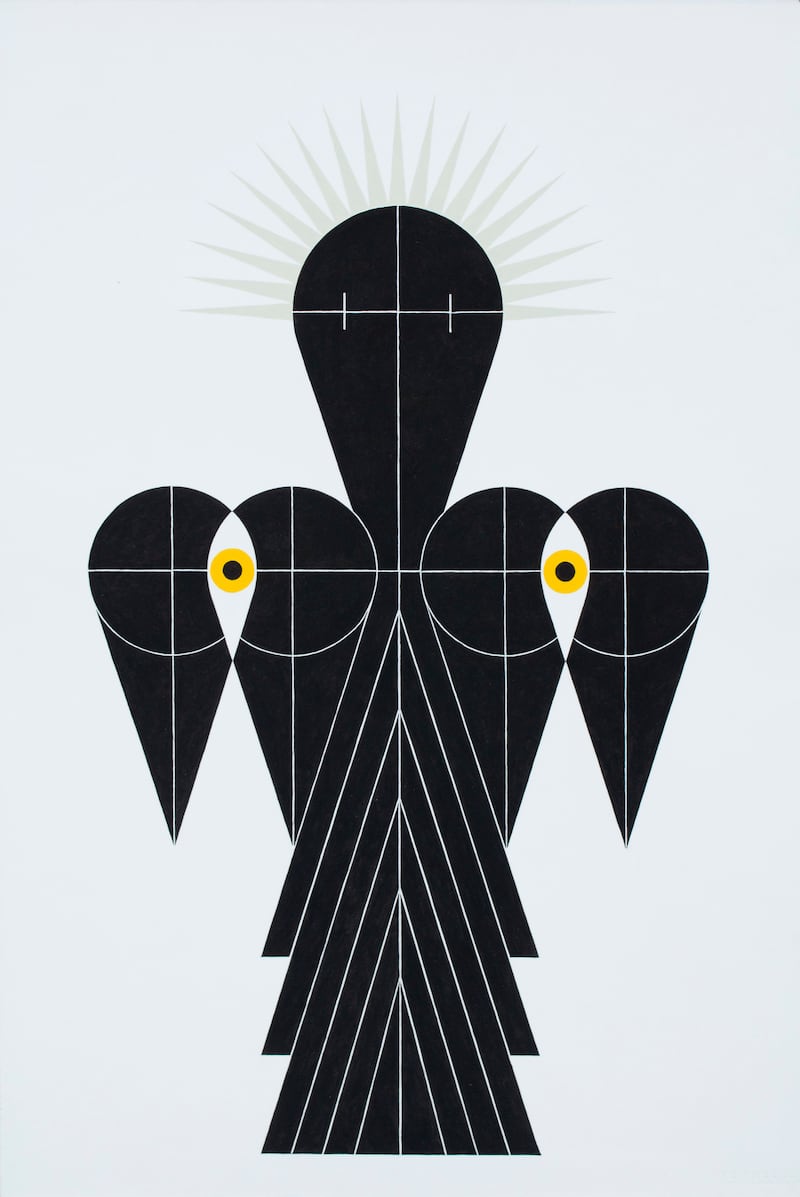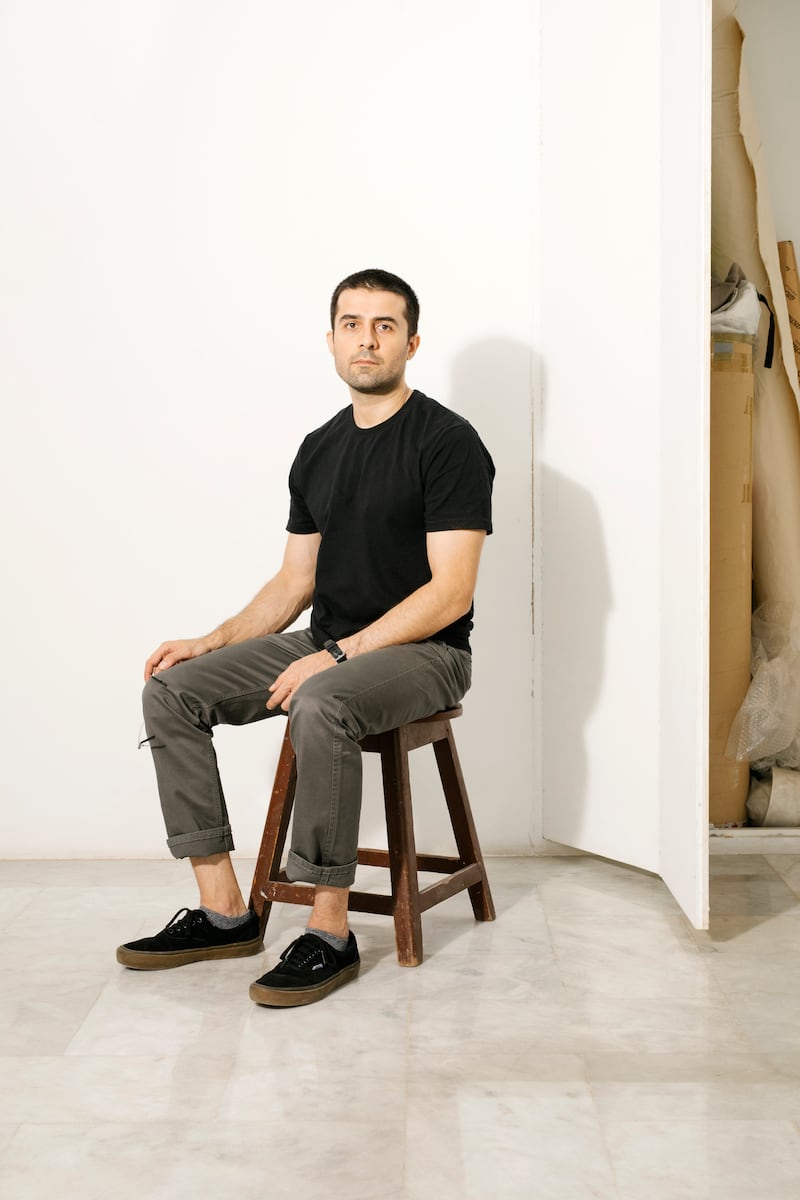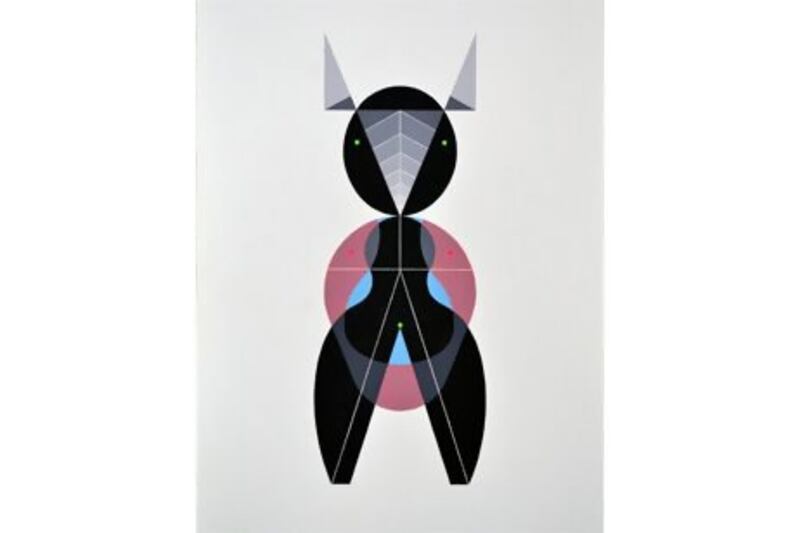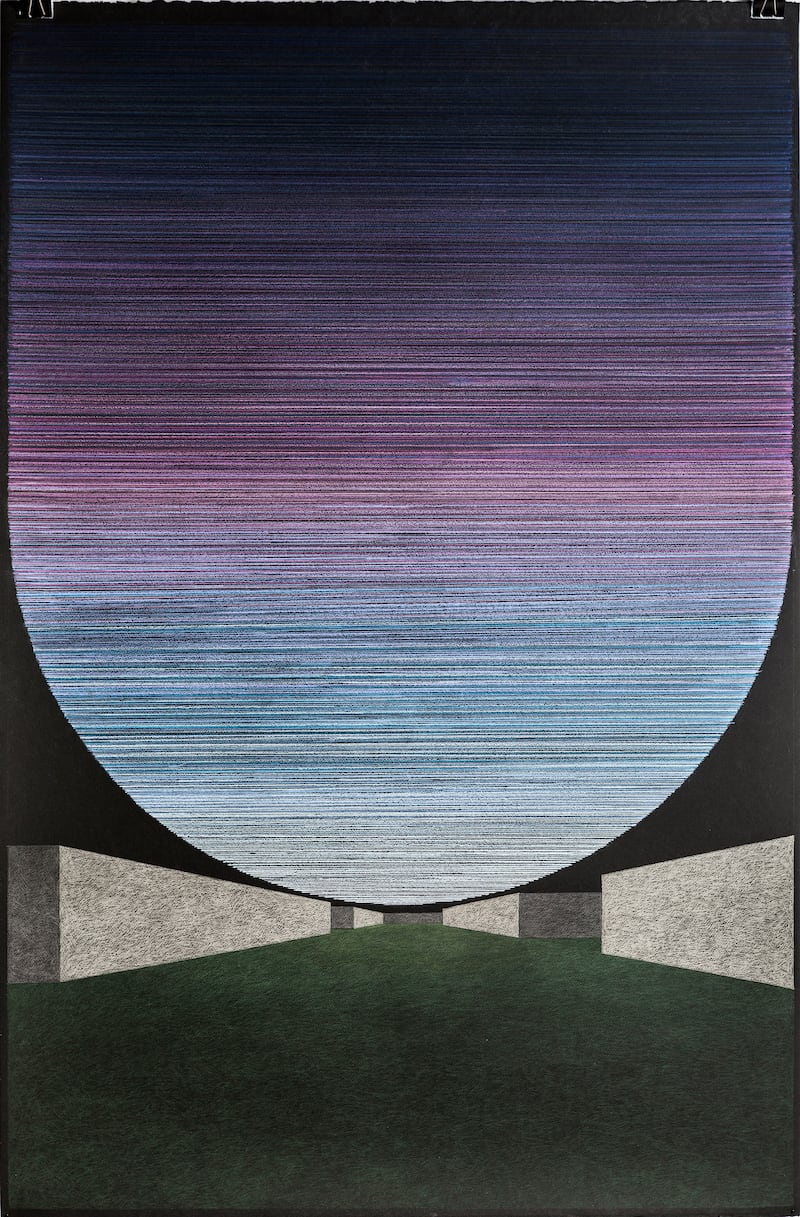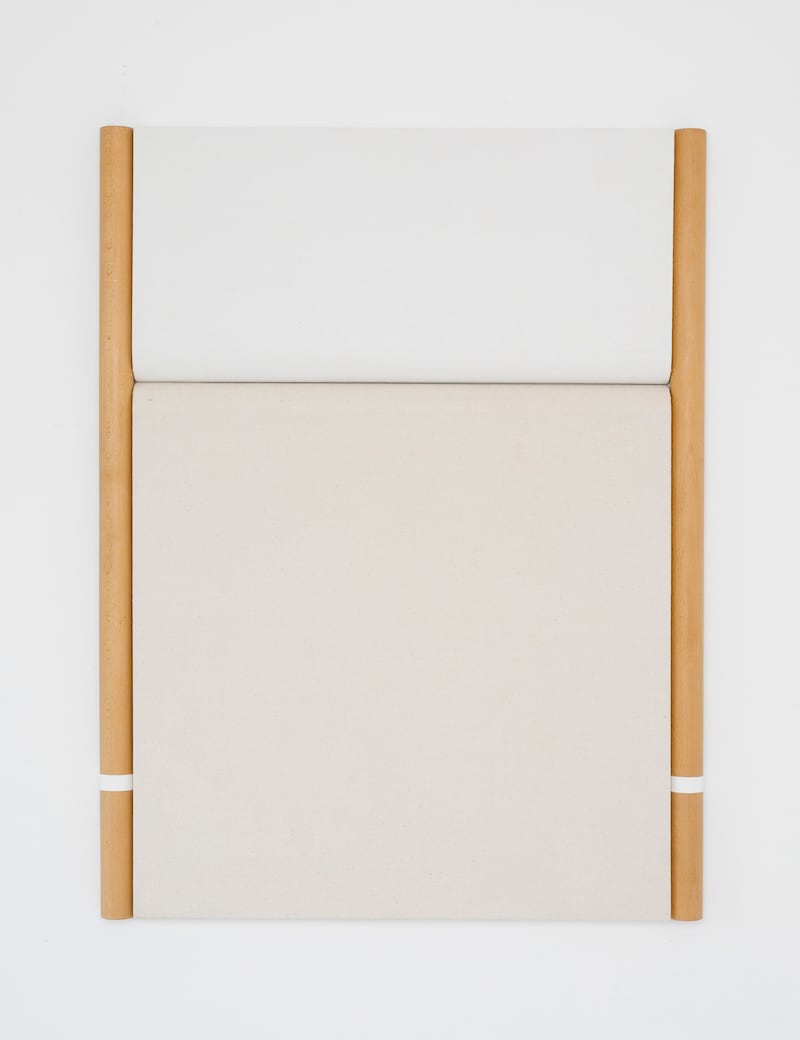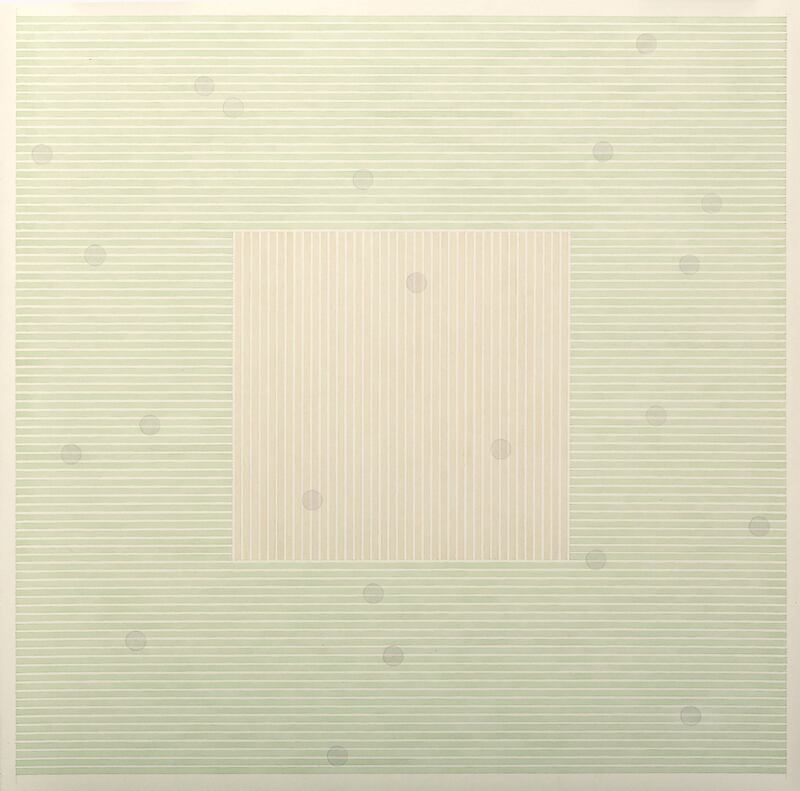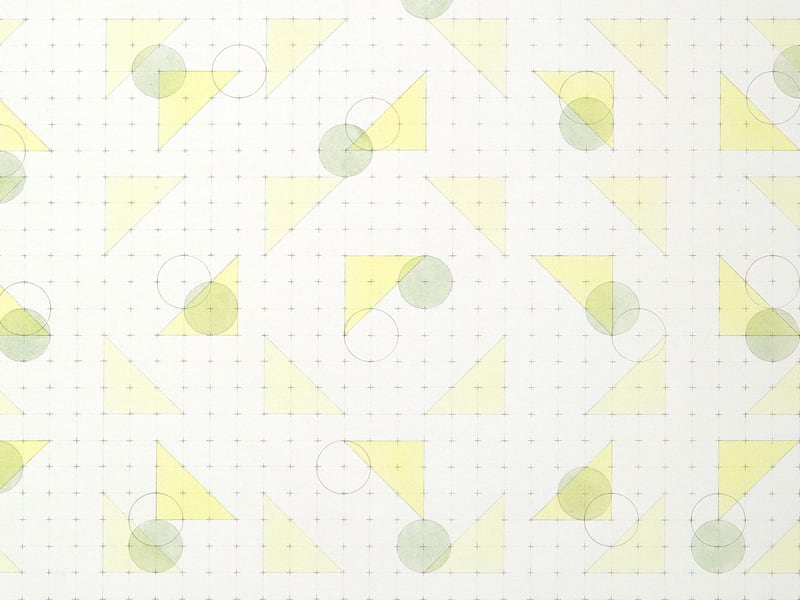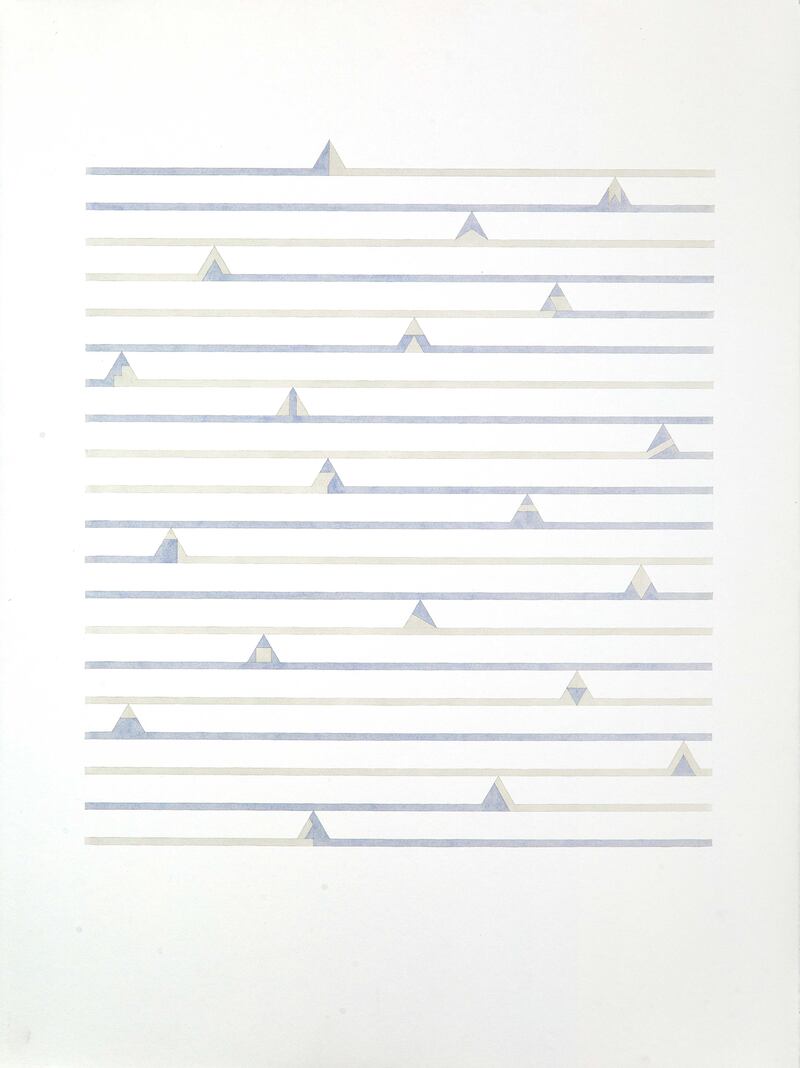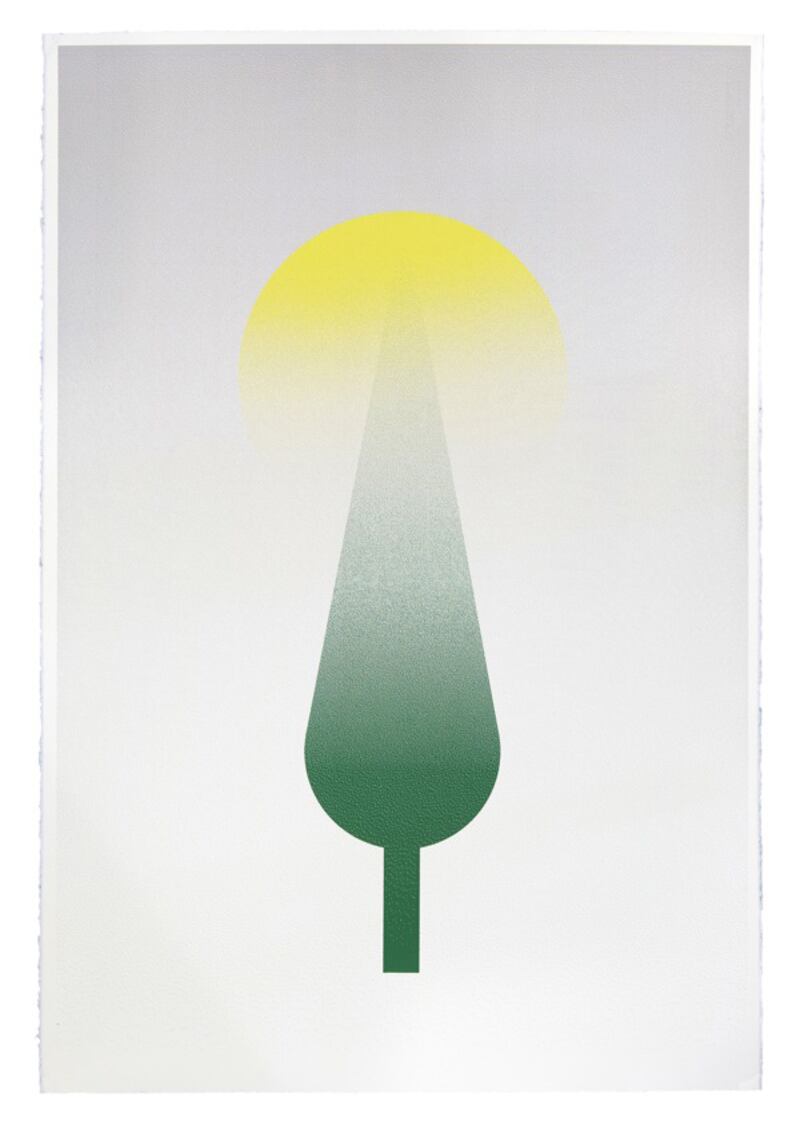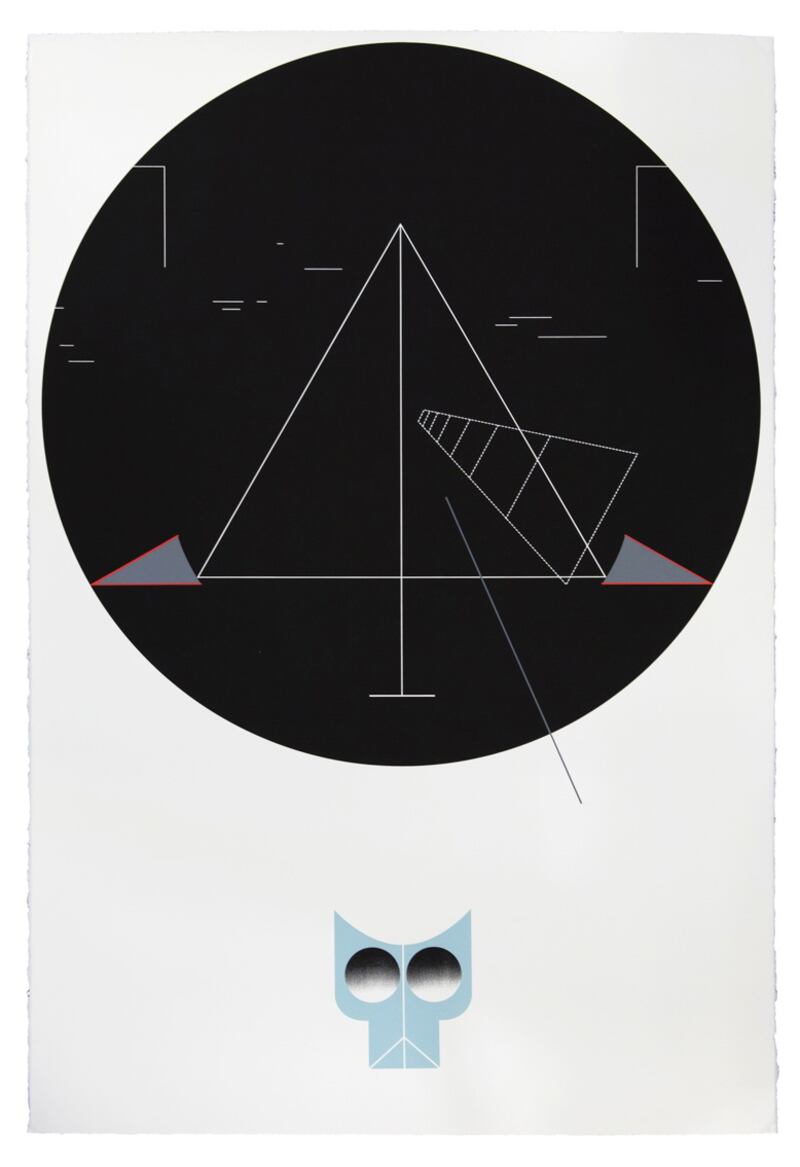In tracing Fahd Burki’s oeuvre, one might recognise a slow surrender to emptiness. Over the past decade, the artist has been dismantling the figures and protagonists in his early figurative works, which contain surreal scenes inspired by comic books, to arrive at minimalist and abstract creations that challenge formal notions of painting.
This gradual and precise shift can be seen in the more than 50 works brought together at Jameel Arts Centre for Burki’s first mid-career survey. Titled Daydreams, the exhibition gathers paintings, works on paper and sculptures made over the past 15 years, and runs from Saturday to October 9. The show also features commissioned pieces, including four reliefs, a form that Burki has been exploring since 2020, and a painting.
Spread across three galleries, the works are not arranged chronologically but are plotted out to trace how the artist has hovered between figuration and abstraction over the years.
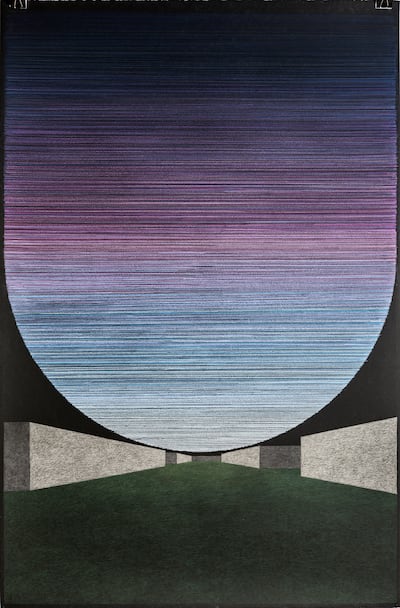
“With a show like this, you start to select works that are pivotal to the practice, that have fundamentally had a big influence on the work that came after. So the challenge was to pinpoint these,” Burki says. “I always keep an eye on what I’ve been doing in the past. I’m very aware of how it’s been evolving.”
His early paintings, from his time as a young artist at the National College of Arts in Lahore, which he graduated from in 2003, are filled with odd machinery and unusual figures that indicate an ongoing narrative. An untitled painting from 2004 depicts a nightmarish scene — a desert landscape where a half-man, half-ram gestures towards a couple, the woman burqa-clad and one-eyed, clutching at cotton candy.
Burki, who lives and works in Lahore, attributes these creations to his childhood fascination with comic books and graphic novels. Growing up, his interest in books was more for the visuals than the text. “My grandparents had many books and I would just flip through them to look at the pictures, but was never interested in reading what was next to them,” he recalls.
In addition to Marvel and DC, he read Franco-Belgian comics such as Asterix and the works of Moebius, the pseudonym for French cartoonist Jean Henri Gaston Giraud.
He carried this interest into his practice while at university, studying at one of Pakistan’s most established institutions. At that point, he had considered architecture as a more straightforward career, but decided that he couldn’t see himself “working for clients”, although elements of architecture eventually appeared in his work. He explains: “I wanted to do something where I had more control, where I was the author.”
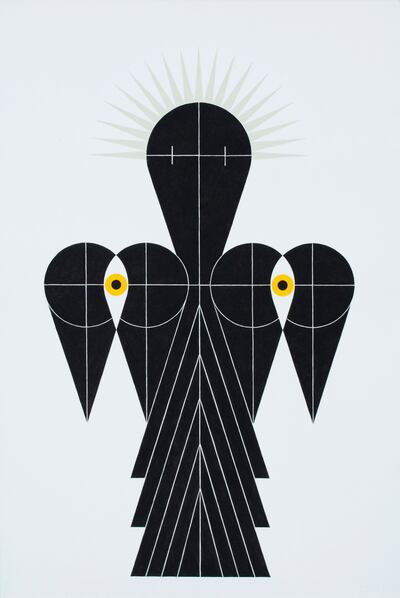
His training hammered in figuration as the default approach. “The first impulse was to do something realistic,” he says. “Coming from graphic media and comic books, there was this emphasis on figure, the build, muscles, anatomy, that automatically led me to painting figures.”
From 2006 onwards, however, Burki had begun removing his characters from their settings, flattening them against blank backgrounds with little shading.
These hybrid beasts often possess recognisable animal characteristics — horns, mouths, limbs and beaks — though some are faceless or are morphing into objects. At times, his subjects can appear as though they’ve been readapted from indigenous cultures in Asia and the Americas. In Vessel (2007), a menacing creature with pointed ears appears like something out of folklore, while Totem (2007) depicts a more playful version of a totem pole figure.
Burki continued his distillation of form and features from 2009 to 2012. His subjects had become more angular, less identifiable in terms of body parts. This erasure takes away other things — signifiers of time and place, clues on cultural contexts. Narratives begin to loosen in these works, with the artist allowing us to imagine them on our own.
“It’s about world-building through figures,” he explains. “I wanted to make a series of characters that would help people imagine what sort of world they would come from.” His protagonists could easily be from underground or outer space, and though this trove of characters is ultimately Burki’s personal mythology, they lend themselves to many interpretations.
Though the difference in styles is evident, some characters can be interpreted as transformations of versions past. A blue sphinx-like mechanical rocking horse in the 2003 painting Vespa becomes a slick, black bulbous thing in Fixed (2007), while the earlier Totem (2007) expands into a wooden sculpture, Optimist, by 2012.
From 2013, Burki’s focus turned to architectural and geometric elements, creating blueprint-like works such as Night Walk (2014) and playing with perspective and colour in Seeking Eden (2014), the latter hinting towards a more painterly approach that would become more prominent in later creations. A series of works on paper from 2016 include his most delicate pieces, contemplative visions mapped out on grids. In Winter’s End, Burki captures the diffusion of light in lines of pastel green and brown, their hues seeming to recede the longer you look at them.
His Interval series from 2017 are paintings that mimic the appearance of concrete slabs adorned with little but horizontal or diagonal lines that cut across the frame. Burki does away with colour, as well, muting his palette down to brown and grey.
It is perhaps during this period in his practice that Burki forged his unique approach to painting, where subtraction becomes ever-active in a reverse process of creation. “When you spend a decade or more painting, you eventually understand painting in itself as a subject. It’s not about making an image any more,” he explains. These recent works were borne out of questions around medium, form and material, he says.
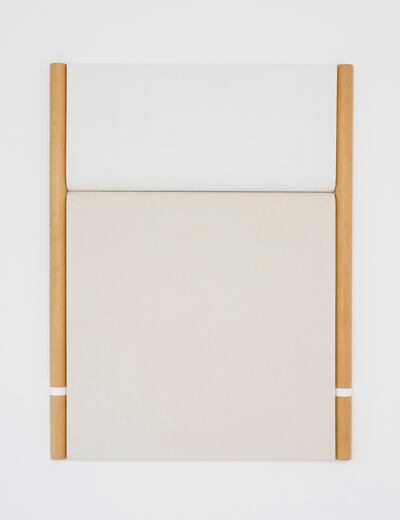
In his 2020 show at Grey Noise in Dubai, titled Minutes before I fall asleep, Burki’s hand became even more restrained. The works built from the series in 2017 and 2018turning and turned paintings into more sculptural pieces. Dimensions were not rendered through paint, but through the edges of the material’s surfaces. In a Tribe of one’s own (2019), colour is hardly on the canvas. Instead, Burki migrated the colours to the wooden frames on the side, adding notches of blue, brown and white.
His skill in painting also becomes one of disguise. His modular piece Dwelling, made up of wood, could be mistaken for rubber or even stone with its matte grey coating. In 2022, the artist has left the canvas untouched in two of his new commissioned works; instead, he builds composites from several segments of canvas.
It would be too easy to consider Burki’s reductionist process as restrictive, but the effect is quite the opposite. He opens up painting to a new plane of possibility. The eye does not try to flit from one element to another as it might on a figurative piece, but rather it travels deliberately across and along the space of the frame, careful not to miss a detail. With an art form as old and well-worn as painting, it is rare to find artists striking at something new, though Burki has steadily and decidedly arrived at it.
Daydreams is on at Jameel Arts Centre from March 5 to October 9. More information is available at jameelartscentre.org
